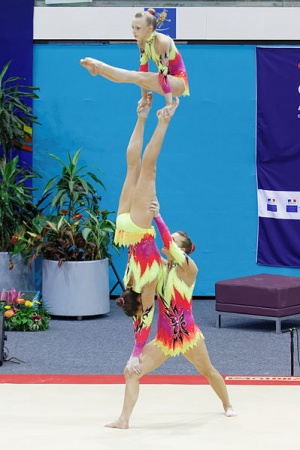The Extrapyramidal and Pyramidal tracts are the pathways by which motor signals are sent from the brain to lower motor neurones. The lower motor neurones then directly innervate muscles to produce movement.
 |
| Extrapyramidal and Pyramidal Tracts |
Both are motor tracts
- Pyramidal tracts – These tracts originate in the cerebral cortex, carrying motor fibres to the spinal cord and brain stem. They are responsible for the voluntary control of the musculature of the body and face.
- Extrapyramidal tracts – These tracts originate in the brain stem, carrying motor fibres to the spinal cord. They are responsible for the involuntary and automatic control of all musculature, such as muscle tone, balance, posture and locomotion
There are no synapses within the descending pathways. At the termination of the descending tracts, the neurones synapse with a lower motor neurone. ie all the neurones within the descending motor system are classed as upper motor neurones. Their cell bodies are found in the cerebral cortex or the brain stem, with their axons remaining within the CNS.
Extrapyramidal Tracts (EPS)
 |
| Extrapyramidal Tracts (EPS) |
The EPS serves an essential function in maintaining posture and regulating involuntary motor functions. In particular, the EPS provides:
- Postural tone adjustment
- Preparation of predisposing tonic attitudes for involuntary movements
- Performing movements that make voluntary movements more natural and correct
- Control of automatic modifications of tone and movements
- Control of the reflexes that accompany the responses to affective and attentive situations (reactions)
- Control of the movements originally voluntary then become automatic through exercise and learning (e.g., in writing)
- Inhibition of involuntary movements (hyperkinesias), which are particularly evident in extrapyramidal diseases.
The EPS controls the automatic activities and influences voluntary motility through a tonic function. These regulation mechanisms involve the processing of centers located in multiple brain regions eg parts of the cerebral cortex, the cerebellum, thalamus, reticular substance, and several basal ganglia (a group of subcortical nuclei).
- Anatomically, the EPS can be defined as a set of nuclei and fiber tracts that received projections from the cerebral cortex and sent projections to the brainstem and spinal cord and, functionally, works as a complex motor-modulation system.
Pyramidal Tract
The Pyramidal tracts
- Descending white matter tracts primarily concerned with motor function extending from the motor cortex (an area in the cerebral cortex where signals that trigger voluntary movement originate) down to synapse with motor neurones of the spinal cord in the anterior horns. A group of pyramidal neurons create a dense network of fibers that travels through the brain, along the brain stem, and into the spinal cord. Once in the spinal cord, the lower motor neurons connect with the nerves that innervate muscles all over the body.
- Derive their name from the medullary pyramids of the medulla oblongata, which they pass through.
- An important part of the central nervous system, and is responsible for voluntary movements made by the body.
When a voluntary movement is made, the signal is passed along from neuron to neuron along the pyramidal tract until it reaches the desired nerves. This transmission takes place in a fraction of a second, allowing people to respond in a way that may feel instantaneous. The level of control available through the pyramidal tract is extremely precise and highly detailed, allowing people to do everything from controlling the movement of the hands during brain surgery to running a marathon.
Composition
- Functionally, the Pyramidal tracts can be subdivided into two:
- Corticospinal tracts – supplies the musculature of the body.
- Corticobulbar tracts – supplies the musculature of the head and neck.
2. Functionally, the EPTs can be subdivided into four.
- Vestibulospinal and Reticulospinal tracts do not decussate, providing ipsilateral innervation.
- Rubrospinal and Tectospinal tracts do decussate, and therefore provide contralateral innervation
Clinical Significance
Upper Motor Neurone Lesion
Damage to the Corticospinal Tracts: Vulnerable as they pass through the internal capsule – a common site of cerebrovascular accidents (CVA). If there is only a unilateral lesion of the left or right corticospinal tract, symptoms will appear on the contralateral side of the body. The cardinal signs of an upper motor neurone lesion are:Damage to the Pyramidal tracts are susceptible to damage, because they extend almost the whole length of the central nervous system.
- Hypertonia – an increased muscle tone Hyperreflexia – increased muscle reflexes Clonus – involuntary, rhythmic muscle contractions Babinski sign – extension of the hallux in response to blunt stimulation of the sole of the foot Muscle weakness
- Damage to the Corticobulbar Tracts: Due to the bilateral nature of the majority of the corticobulbar tracts, a unilateral lesion usually results in mild muscle weakness. However, not all the cranial nerves receive bilateral input, and so there are a few exceptions
Damage to the Extrapyramidal Tracts
Alterations affecting the various circuits play a key role in the pathogenesis of extrapyramidal motor disorders. Classic examples of injury to the EPS are Parkinson disease (PD), Huntington chorea (HC) caused by the degenerative process in the striatum, Sydenham chorea, multiple systemic atrophy (MSA), and progressive supranuclear palsy.Extrapyramidal tract lesions are commonly seen in degenerative diseases, encephalitis and tumours. They result in various types of dyskinesias or disorders of involuntary movement.
- The alterations that lead to these extrapyramidal pathologies mainly concern neurodegenerative processes. Depending on the specific disease, the main symptoms are alterations of the involuntary movements such as tremors, and spasms, impairment of voluntary movements as well as a decline in cognitive functions involving mainly memory tasks, and affective sphere disorders such as depression. Postural alterations are also detected.eg Pisa Syndrome.

0Comments